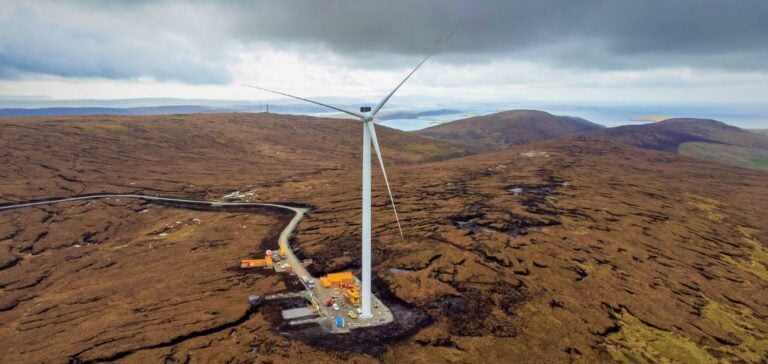The commissioning of Viking Wind Farm’s first turbine on Scotland’s Shetland Islands represents a major step forward for the UK energy sector. Set to become the UK’s most productive onshore wind farm, the facility is the result of considerable investment and careful strategic planning.
Investment and Production Capacity
With a total installed capacity of 443MW spread over 103 Vestas turbines, Viking Wind Farm is designed to generate around 1.8 TWh of electricity annually. This is equivalent to supplying nearly 500,000 British homes, boosting the country’s energy capacity. Construction began in autumn 2020, and the last turbine was installed in August 2023, on schedule. The Shetland High Voltage Direct Current (HVDC) project is also progressing, with a 260 km undersea cable designed to connect Shetland to the UK power grid for the first time. Full commissioning is scheduled for summer 2024, bringing greater stability and integration into the national grid.
Economic implications and expansion strategies
The development of Viking Wind Farm represents a strategic investment for SSE Renewables and SSEN Transmission. Heather Donald, Director of Renewable Energy Development and Construction at SSE Renewables, emphasizes the importance of this project in strengthening Scotland’s and the UK’s energy security. In addition, John Scott, Program Manager at SSEN Transmission, highlights the positive impact on the local economy in Shetland. The integration of this wind farm into the national grid will not only stabilize the electricity supply, but also export surplus energy, creating new economic opportunities for the region. In addition, local infrastructures, such as the new network delivery point at Gremista, are being developed to ensure an efficient and reliable connection.
Growth prospects and technical challenges
The Viking Wind Farm is the result of a successful collaboration between SSE Renewables and SSEN Transmission, demonstrating a high level of technical and logistical expertise. The teams overcame the complex challenges of installing the turbines and laying the HVDC cable, positioning this project as a benchmark in the sector. Completion of the overhead lines and underground circuits linking Kergord to Gremista is scheduled for 2025, further consolidating Shetland’s connection to the UK grid. Long-term prospects for Viking Wind Farm are promising, with plans in place to maximize efficiency and energy production. The expected economic benefits of this project include not only a reduction in energy costs, but also the creation of new business opportunities in the region. By strengthening its internal energy capacity, the UK is preparing itself to better respond to fluctuations in the global energy market.
The completion of Viking Wind Farm and the HVDC project will mark a turning point for the energy industry, demonstrating the UK’s ability to develop state-of-the-art energy infrastructure and attract substantial investment.






















